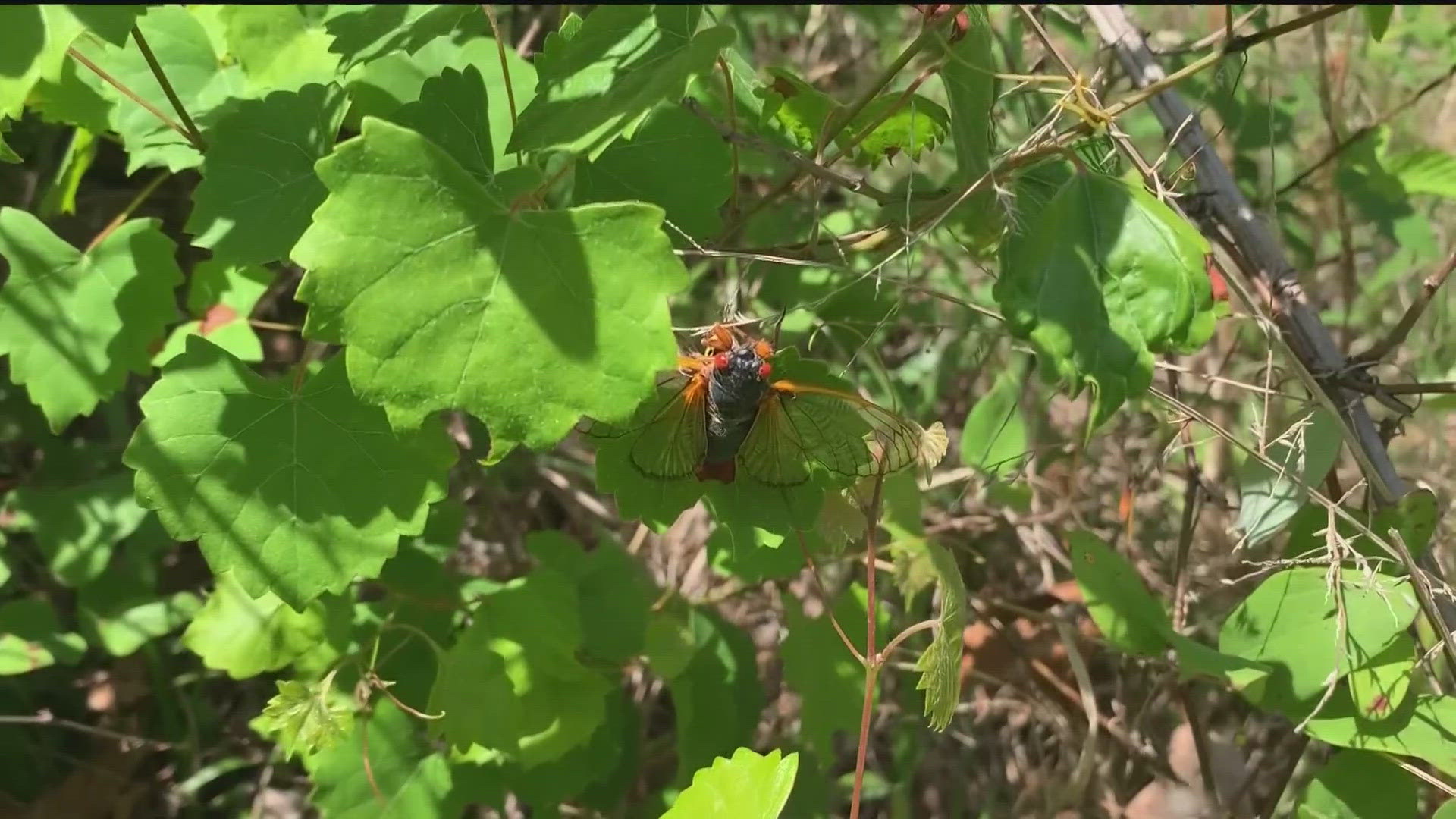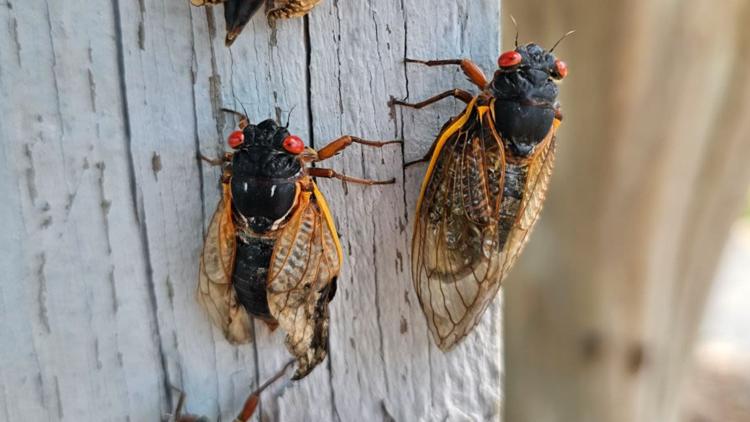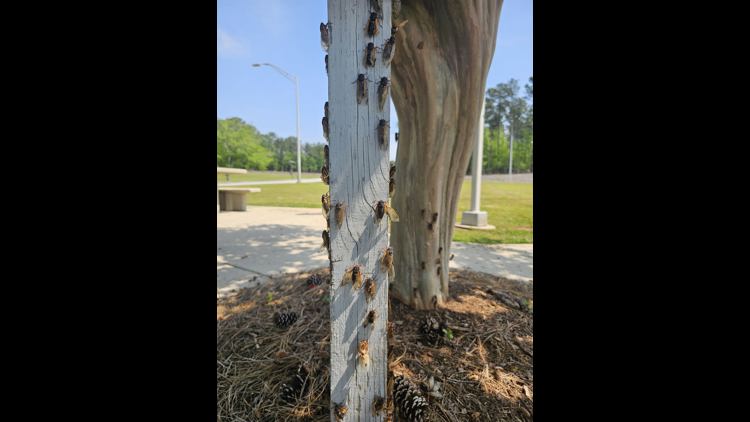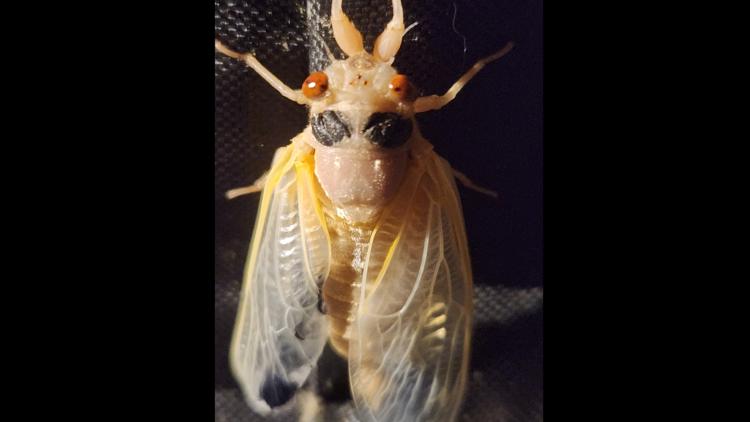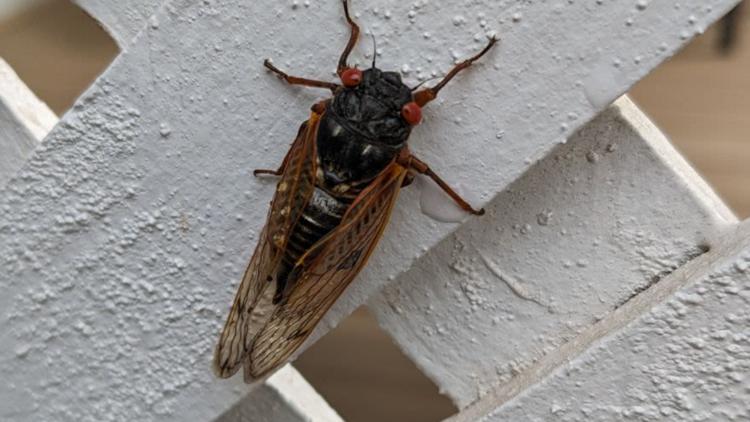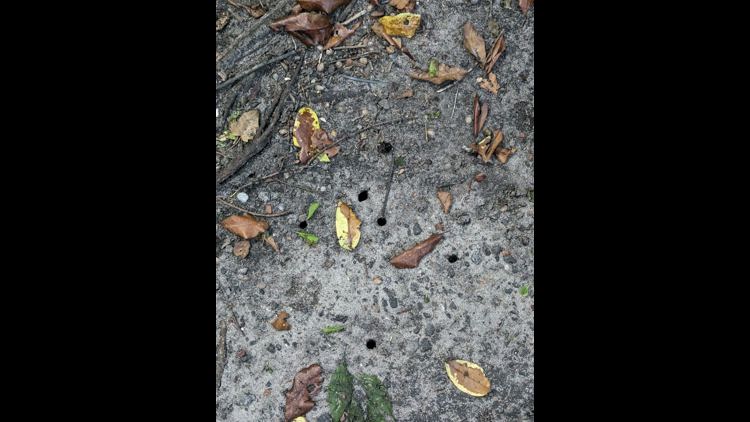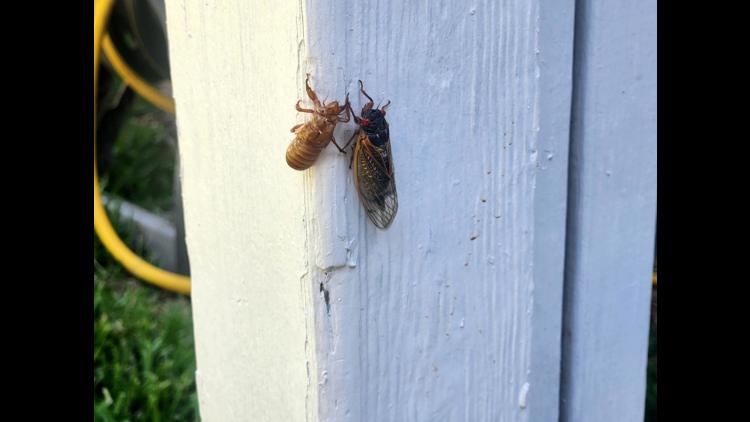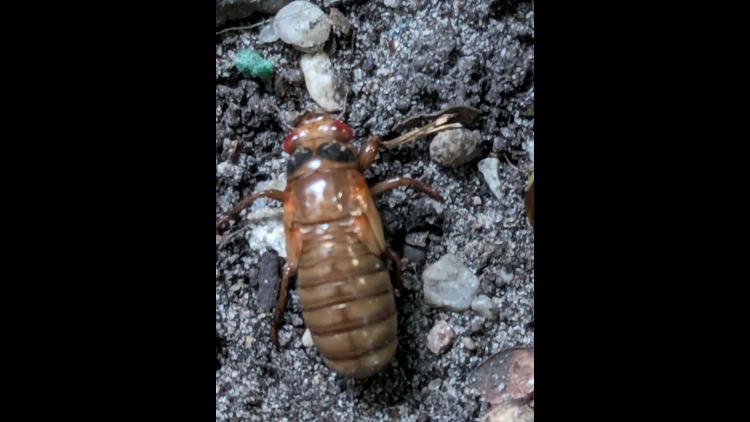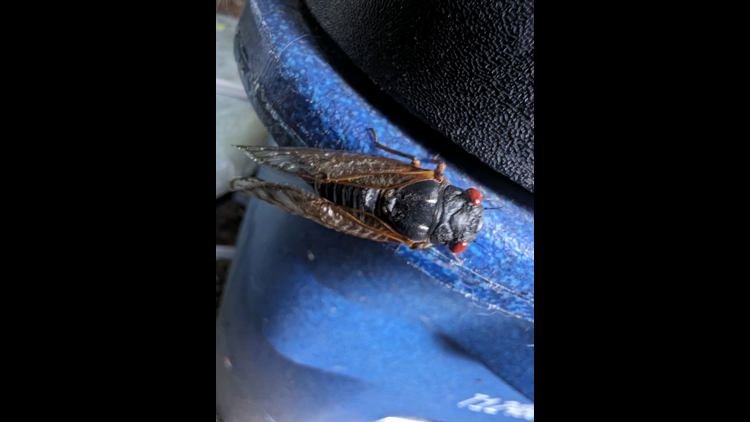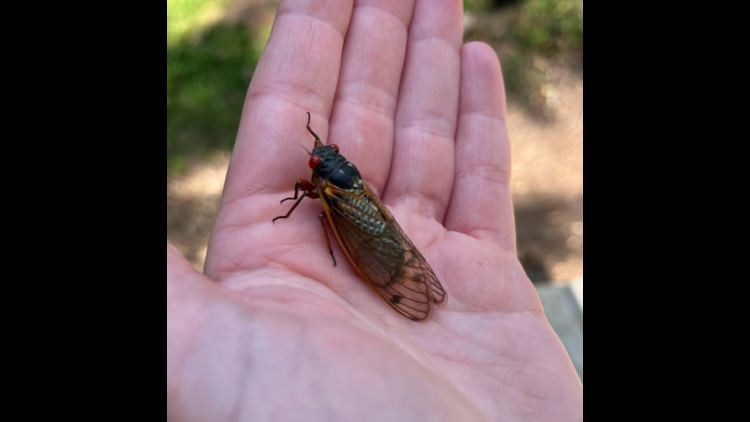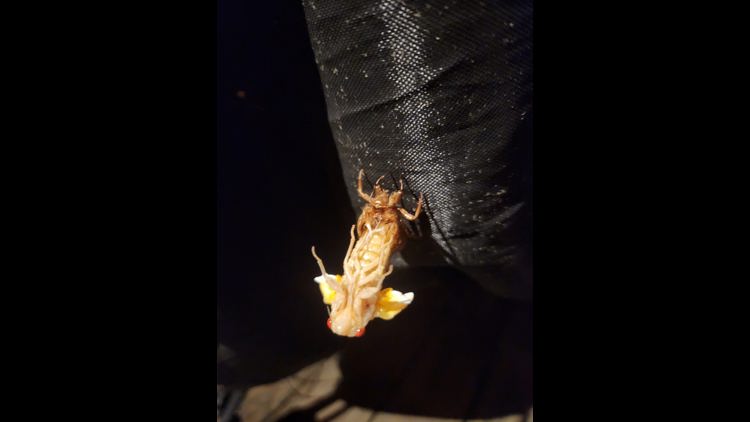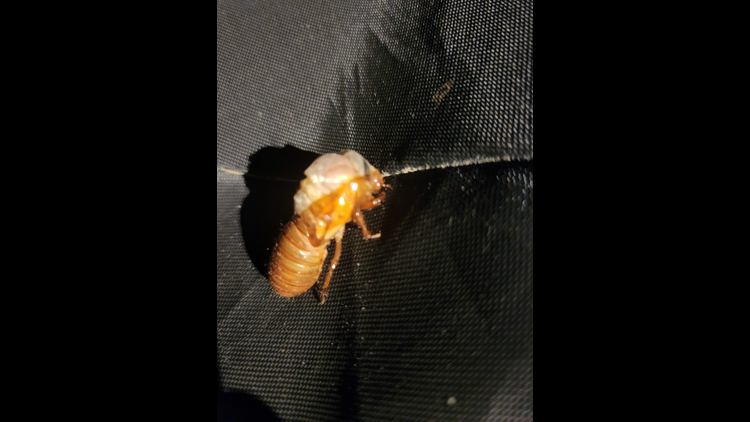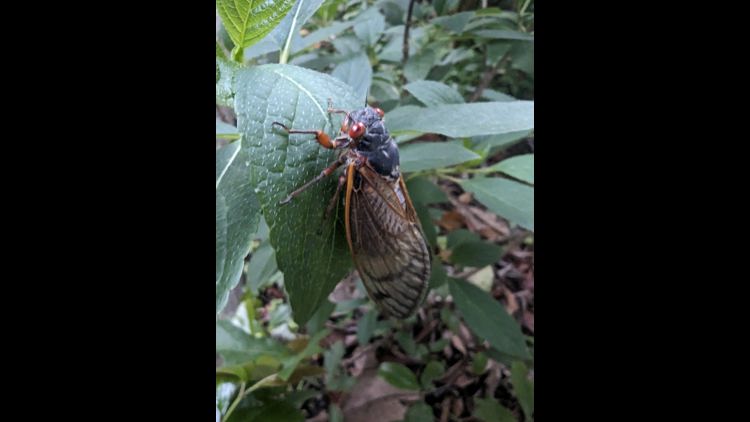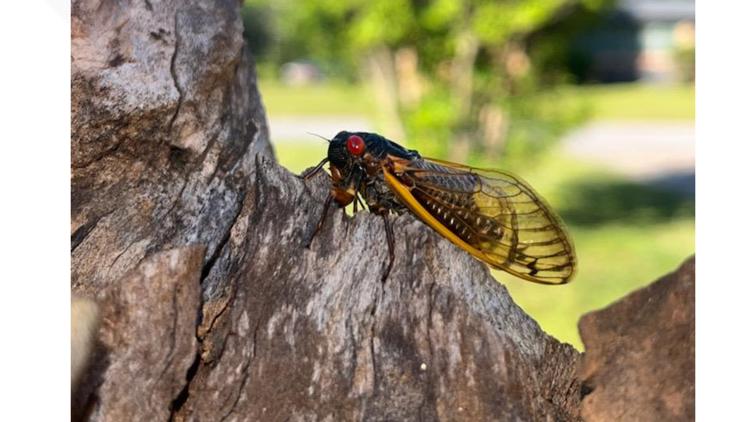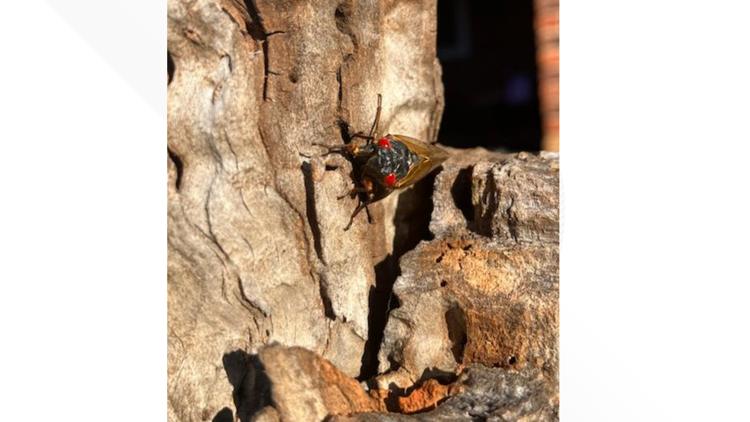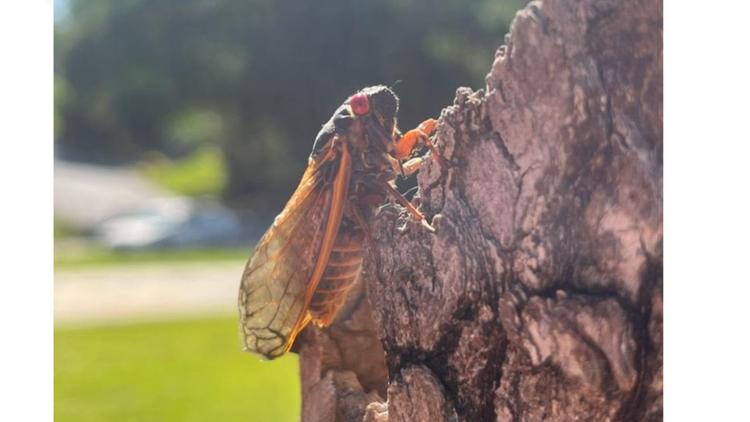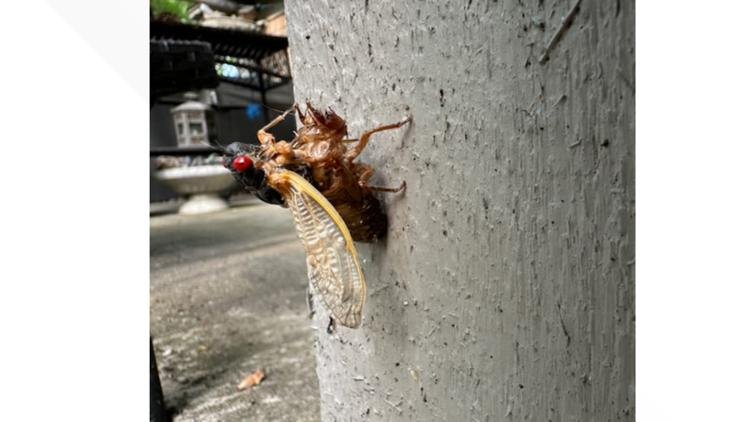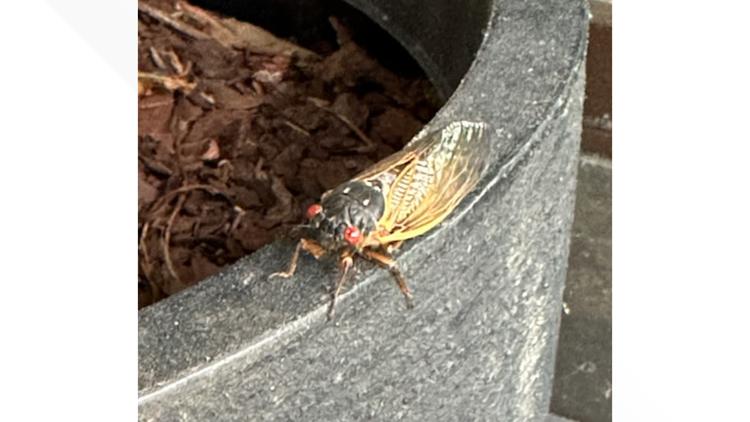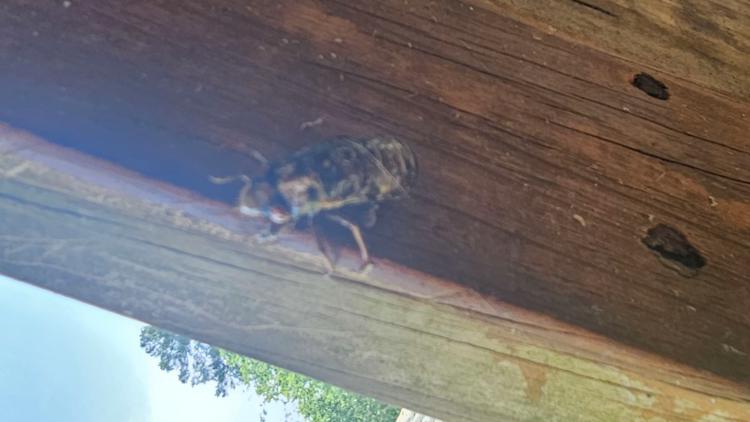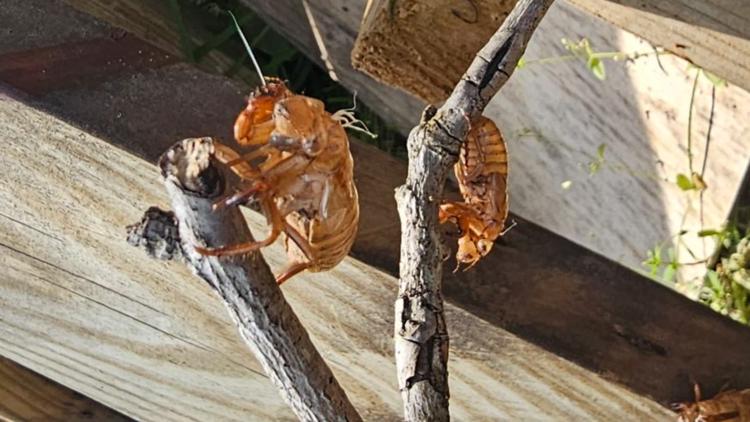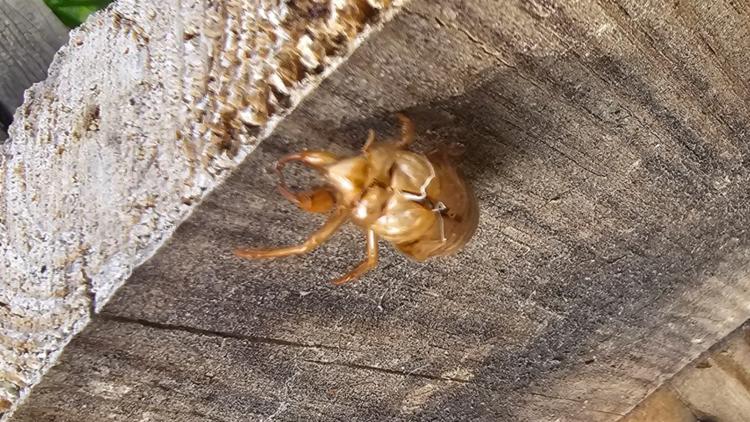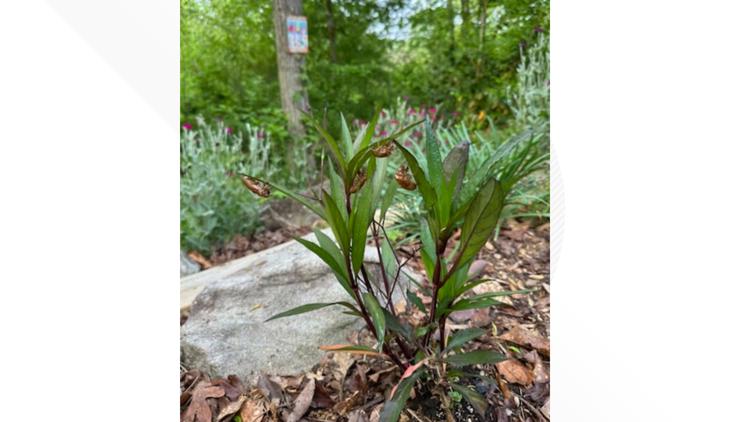LAGRANGE, Ga. — Cicadas have been emerging across parts of Georgia as April comes to a close.
11Alive viewers are sharing photos of the cicadas. Some are emerging in small numbers and others in much larger groups.
Although cicadas are not emerging in Atlanta, that's because the trees aren't old enough, according to Dr. Nancy Hinkle with the Department of Entomology at the University of Georgia. She says all of the development in the city means these periodical cicadas could no longer thrive.
However, cicadas may be present in very large numbers in other parts of the state.
“We found they did quite well in the central part of Georgia. We found good populations in the northwest corner of Georgia, and some of them extended pretty far south. But none in the Coastal Plain," Dr. Hinkle said, referring to the research she and colleagues did the last time Brood XIX emerged, 13 years ago in 2011.
Story continues below gallery.
Brood XIX Cicadas in Georgia
The map below shows counties that reported cicadas in the last emergence. This was a much larger group of counties than they had thought! The largest cluster of counties is in central Georgia, from Columbus to Macon and east to Augusta.

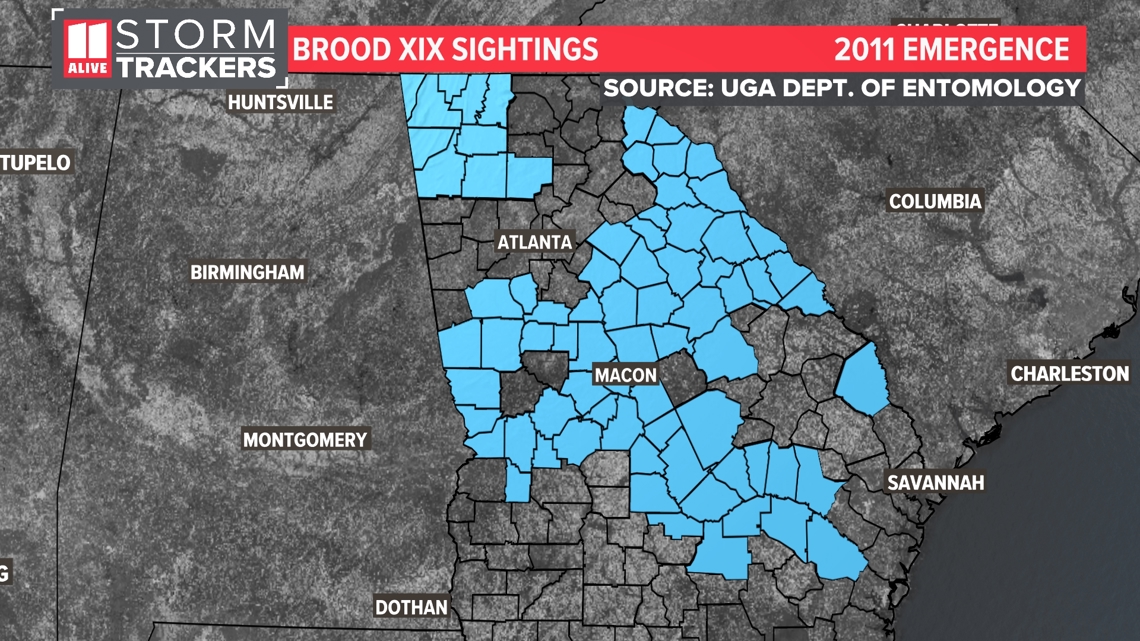
A cicada's life cycle is largely spent in the dark. After hatching from eggs laid on tree branches, cicadas live underground. At this stage, they're called "nymphs" and feast on the sap of tree roots until it's time to emerge.
The unique magic of cicadas is that they know when it's time to come up. Why 13 years for this group and 17 for others? That's part of the mystery that sparks fascination.
But 13 years later, when ground temperatures get warm enough -- the cicadas emerge in large numbers. When we say large -- it could be fairly large, according to Dr. Hinkle.
“You're going to have what's estimated is as millions, probably billions, possibly trillions of cicadas emerging in Georgia," Dr. Hinkle said.
Although that's the estimate for the count of these tiny bugs - it's nearly impossible to get an actual accurate count.

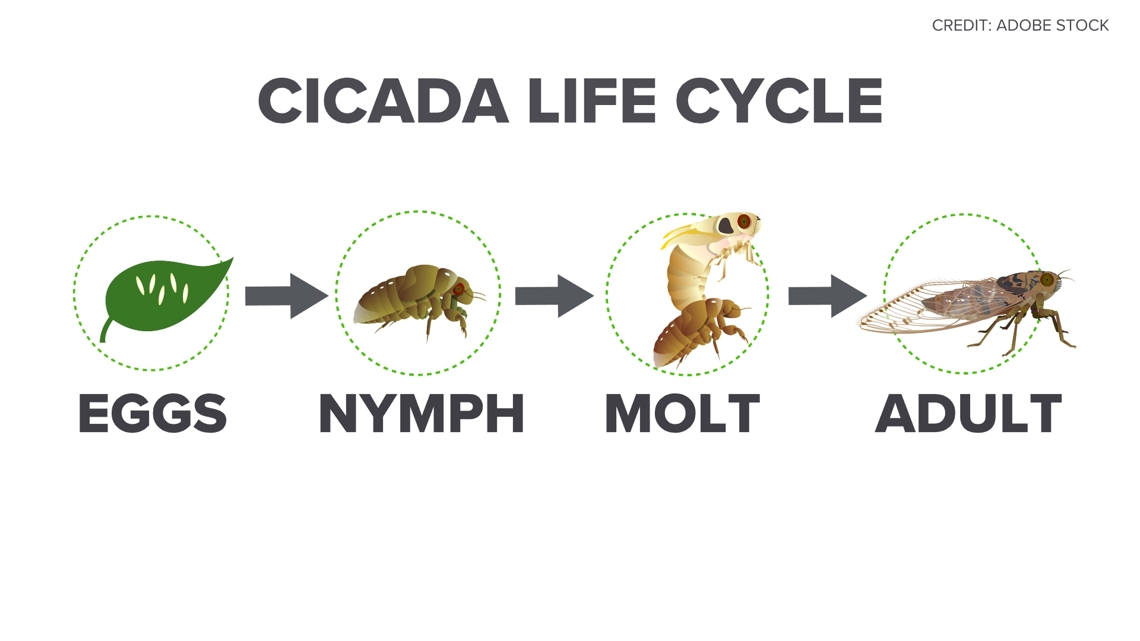
When they first come out of the ground through little holes they dig -- they find a tree or another plant sticking out of the ground to attach to. It's there that they molt, leaving behind their exoskeletons.
Upon molting, they appear more grub-like and paler in color before they have time to dry out.

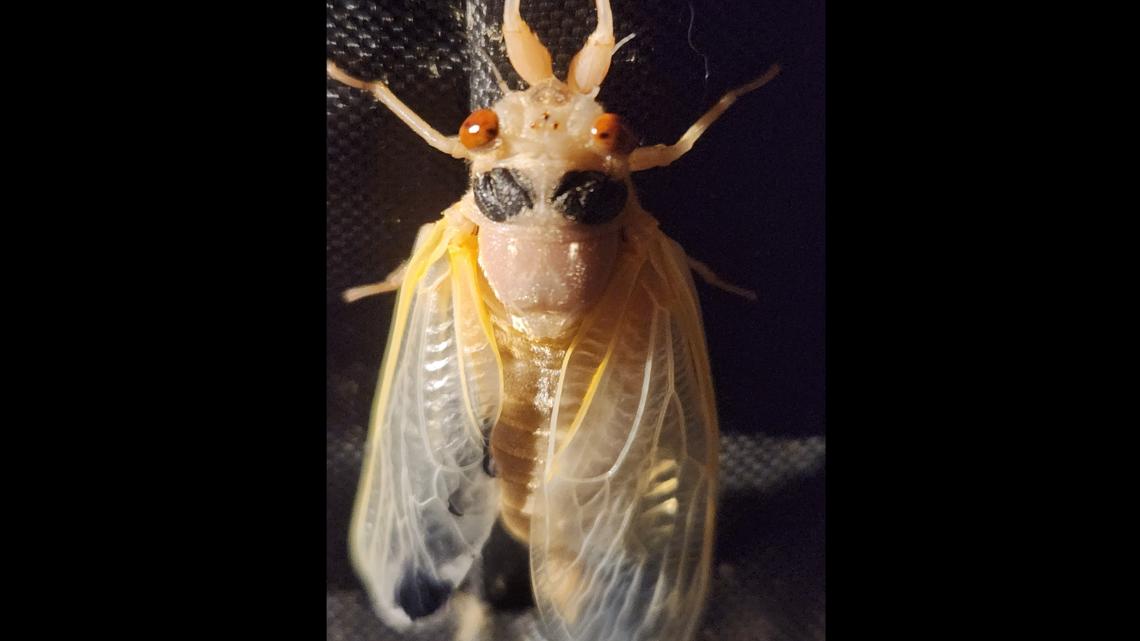
Some chefs say that's the best time to harvest if you want to make a sauteed cicada appetizer.
After drying out, they take on a different color. Periodical cicadas have dark-colored abdomens with bright orange-red eyes and orange wings. Then, according to Dr. Hinkle, the real work begins.

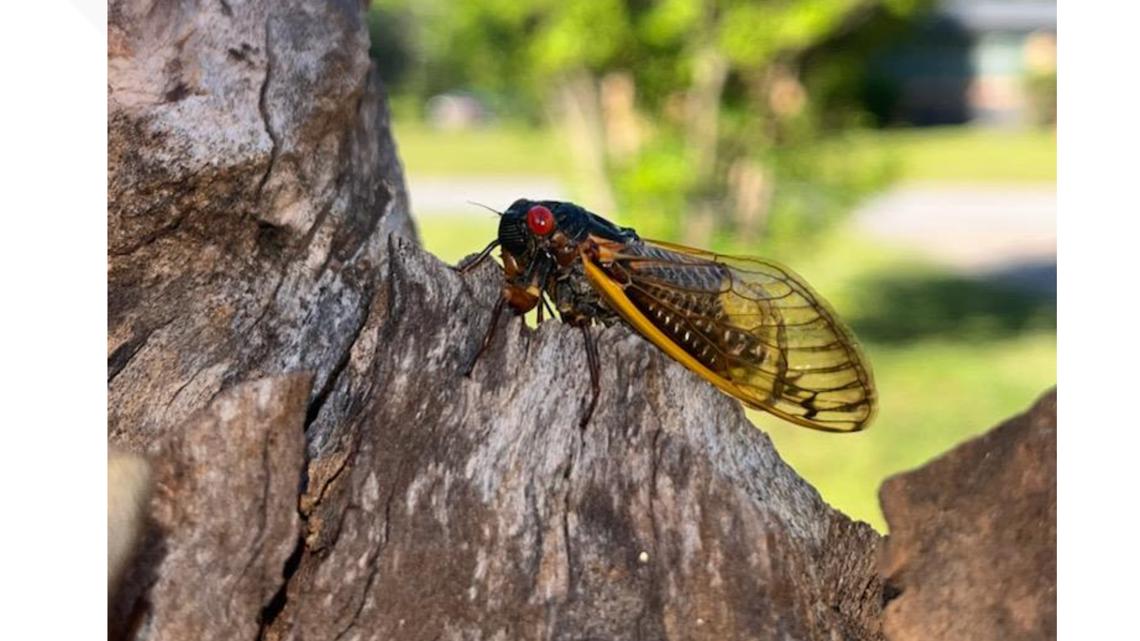
“The adult then expands its wings, the wings dry, and then it's able to fly. And the males fly up into the trees and almost immediately start calling," Dr. Hinkle added.
By "calling," she means that shrill mating call.
"Their whole purpose in life is to call attract a mate, mate, and then they die," she said.
The females lay their eggs in the bark of tree branches. The adult cicadas die. As the new eggs hatch, the process repeats itself.
Although largely sensationalized in the news, cicadas do not harm people or pets. If your dog or cat eats one, it's fine. In a way, it's the circle of life.
The cicadas will be in large numbers for several weeks to around a month. By early June, these periodical cicadas will be dying off.
Although in Atlanta we will not see Brood X, we will still get our typical annual cicadas later in the summer. Those are distinctly different -- easily identified by their green color.

